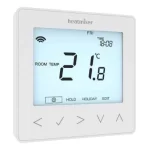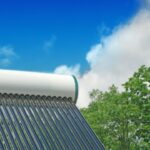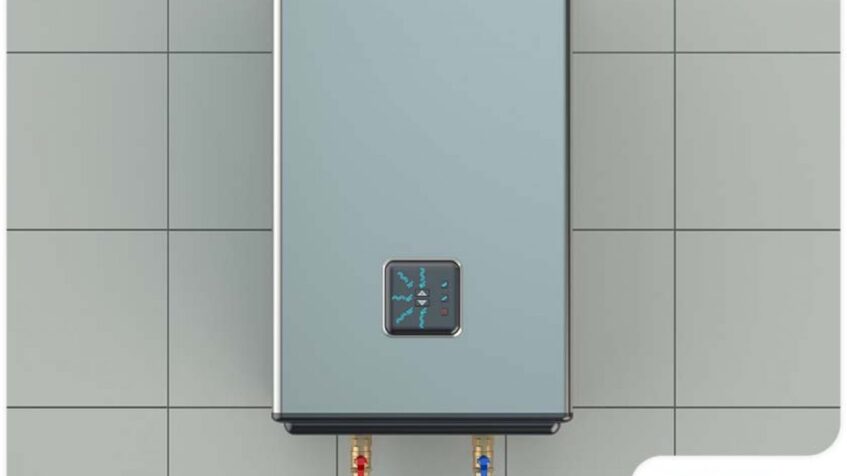
The Most Common Problems With Tankless Water Heaters and Their Solutions
In the ever-evolving world of home appliances, tankless water heaters have emerged as a modern and energy-efficient solution to meet our hot water needs. Gone are the days of clunky, space-consuming water tanks that heat and store water continuously.
Certainly, tankless water heaters provide the advantage of supplying unlimited hot water instantly, all while conserving both space and energy.
However, like any technological innovation, they have their share of challenges.
In this article, we will delve into the world of tankless water heaters and explore some of the most common problems homeowners encounter when using them. These issues can damper your hot water experience, from inconsistent water temperatures to maintenance headaches. But fear not, for we will also provide practical solutions to help you enjoy the many benefits of tankless water heaters without the hassles. Whether you’re a current tankless water heater owner or contemplating making the switch, this comprehensive guide will equip you with the knowledge to troubleshoot, maintain, and optimize your system for years of reliable hot water performance.
How do Tankless Water Heaters Work?
Tankless water heaters, also known as on-demand or instantaneous water heaters, operate on a fundamentally different principle compared to traditional tank-style water heaters. Understanding how they work is key to appreciating their energy-saving advantages.
Principles of Operation:
1. No Storage Tank: The most obvious difference between tankless and traditional water heaters is the absence of a storage tank. Instead of continuously heating and storing a large volume of water, tankless water heaters heat water only when needed.
2. Cold Water In, Hot Water Out: When you turn on a hot water tap or appliance, cold water from your main water supply enters the tankless unit through an inlet pipe.
3. Heating Element or Burner: Inside the tankless unit, there’s a heating element or burner, depending on whether it’s an electric or gas-powered model. This element heats the water rapidly as it flows through.
4. Temperature Sensors: Tankless water heaters come with temperature sensors that oversee the cold water’s incoming temperature and the preferred hot water temperature chosen by the user.
5. Gas and Ventilation (for Gas Models): Natural gas or propane is used as the heat source in gas-powered tankless water heaters. Combustion occurs, and a heat exchanger transfers the generated heat to the passing water. Ventilation is crucial to expel combustion byproducts safely.
6. Instantaneous Hot Water: The hot water exits the tankless unit and flows directly to your faucet or appliance, providing an almost instantaneous hot water supply.
Energy-Saving Advantages:
Now, let’s explore the energy-saving advantages of tankless water heaters:
1. No Standby Heat Loss: Traditional water heaters continuously maintain a hot water reservoir, leading to standby heat loss. In contrast, tankless units only heat water when needed, eliminating standby energy consumption.
2. Energy Efficiency: Tankless water heaters are highly efficient, with energy utilization efficiencies typically exceeding 90%. This means less wasted energy and lower utility bills.
3. Endless Hot Water: Because tankless units heat water on demand, you won’t run out of hot water during long showers or when simultaneously using multiple hot water sources.
4. Longer Lifespan: Tankless water heaters tend to have longer lifespans than tank-style heaters, reducing the frequency of replacements and associated environmental impact.
5. Space Savings: Tankless units are compact and wall-mounted, freeing up valuable space in your home, which is especially advantageous in smaller living spaces.
6. Reduced Environmental Impact: Tankless water heaters contribute to a smaller carbon footprint and decrease water wastage by consuming less energy and water.
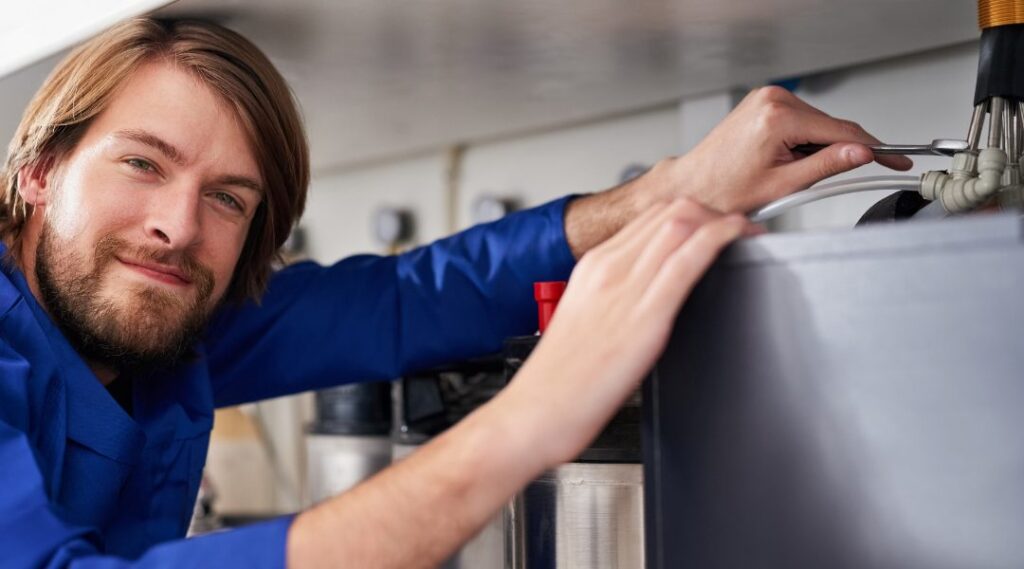
Common Problems with Tankless Water Heaters
Tankless water heaters are popular for their instant hot water supply and energy efficiency, yet, similar to any appliance, they can experience issues.
Here are some of the most frequent issues homeowners encounter when using tankless water heaters:
Inconsistent Water Temperatures:
· Issue: One of the primary complaints with tankless water heaters is inconsistent water temperatures. Users may experience fluctuations between hot and cold water during use.
· Causes: Inconsistent temperatures can result from inadequate unit sizing, a high demand for hot water exceeding the unit’s capacity, or fluctuations in incoming water temperature.
· Solution: Properly size your tankless water heater based on your household’s hot water demand. Additionally, consider using thermostatic mixing valves to maintain consistent water temperatures at fixtures.
Flow Rate Limitations:
· Issue: Tankless water heaters have flow rate limitations. If multiple hot water fixtures are used simultaneously, the flow rate may exceed the heater’s capacity, reducing hot water output.
· Causes: This problem occurs when the tankless unit can’t keep up with the simultaneous demand for hot water.
· Solution: Install multiple tankless units in parallel or consider a larger unit to meet high-demand situations. Alternatively, stagger hot water use during peak times.
Mineral Buildup and Scaling:
· Issue: Mineral buildup and scaling, often caused by hard water, can accumulate inside the tankless unit’s heat exchanger. This reduces its efficiency and can lead to overheating or damage.
· Causes: Hard water contains minerals like calcium and magnesium, precipitating when heated, forming scale deposits.
· Solution: Install a water softener or descaling system to prevent mineral buildup. Regularly flush and clean the tankless unit’s heat exchanger as the manufacturer recommends.
Ventilation and Exhaust Problems:
· Issue: Proper ventilation and exhaust are crucial for gas-powered tankless water heaters. Issues in this area can lead to improper combustion or carbon monoxide leaks.
· Causes: Insufficient ventilation, blocked exhaust vents, or incorrect installation can result in ventilation problems.
· Solution: Ensure proper installation by a licensed technician, and regularly inspect vents and air intake systems for blockages or damage. For more safety, install carbon monoxide detectors in your home.
Electrical or Gas-Related Issues:
· Issue: Tankless water heaters, both electric and gas, may encounter electrical or gas-related problems, such as faulty wiring, gas leaks, or ignition failures.
· Causes: These issues can stem from improper installation, wear and tear, or faulty components.
· Solution: Consult a qualified technician to diagnose and repair electrical or gas-related problems.
Maintenance Requirements:
· Issue: Some homeowners may overlook the maintenance requirements of tankless water heaters, leading to reduced efficiency and potential breakdowns.
· Causes: Lack of regular maintenance, including descaling, cleaning, and inspection, can lead to various problems over time.
· Solution: Follow the manufacturer’s maintenance recommendations, which typically include periodic flushing, cleaning the heat exchanger, and checking for leaks or worn-out components.
Diagnosing Tankless Water Heater Problems
Diagnosing problems with your tankless water heater requires a systematic approach. Here are some guidelines to help homeowners identify specific issues and troubleshoot their tankless water heaters effectively:
Check for Error Codes:
· Usually tankless water heaters have a digital display that provides error codes when a problem occurs. Consult your unit’s manual to decode these error messages. They can pinpoint specific issues, making diagnosis easier.
Assess Water Temperature Issues:
· Problem: If you’re experiencing inconsistent water temperatures (e.g., water going from hot to cold), this could indicate several issues.
· Diagnosis:
Check if you’re overloading the system by using multiple hot water fixtures simultaneously.
Ensure the unit size is appropriate for your household’s hot water demand.
· Check for error codes indicating flow or temperature sensor problems.
Flow Rate Problems:
· Problem: Reduced flow rates may indicate flow sensor issues or a clogged water filter.
· Diagnosis:
Verify that all water fixtures have adequate flow. If only hot water is affected, it may be a unit-specific problem.
Clean or replace the water filter (if present).
· Check for error codes related to flow or sensor problems.
Mineral Buildup or Scaling:
· Problem: Reduced hot water output or irregular heating can be the result of mineral buildup in the heat exchanger.
· Diagnosis:
Review the unit’s maintenance history. This might be the issue if you have yet to perform regular descaling.
· Listen for unusual noises, such as boiling or popping inside the unit, indicating scale buildup.
Ventilation and Exhaust Issues:
· Problem: If you’re using a gas-powered tankless heater, improper ventilation can lead to combustion problems and carbon monoxide leaks.
· Diagnosis:
Check for any visible obstructions or blockages in the exhaust vent or air intake.
Inspect the vent termination point outside for debris or damage.
· If you suspect a ventilation issue, contacting a professional for a thorough inspection and correction is crucial.
Electrical or Gas-Related Problems:
· Problem: If the unit isn’t heating or igniting, there may be electrical or gas-related issues.
· Diagnosis:
Ensure the gas supply valve is open.
Check for damaged or loose electrical connections or wires.
· Listen for clicking or sparking sounds during ignition attempts.
Leaks and Drips:
· Problem: Water leaks can occur from fittings, valves, or within the unit.
· Diagnosis:
Inspect all plumbing connections for visible leaks.
Place a tray of paper towels under the unit to detect any drips.
· Check for error codes related to leaks.
Maintenance Requirements:
· Problem: Reduced efficiency and performance may be due to neglected maintenance.
· Diagnosis:
Review the manufacturer’s maintenance guidelines and ensure you have followed them.
· Schedule a professional maintenance service if you’re uncertain about the unit’s condition.
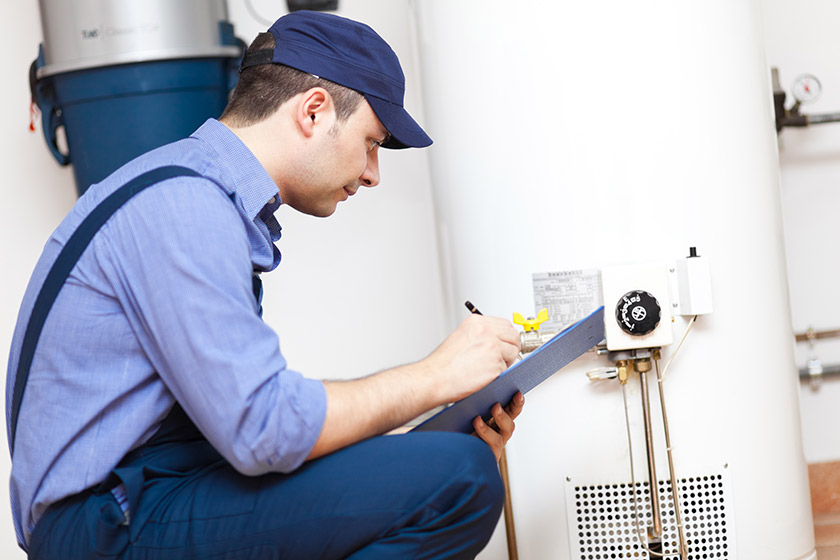
Solutions and Fixes of Common Problems
Here are practical solutions and step-by-step instructions to address common problems with tankless water heaters:
- Inconsistent Water Temperatures:
· Solution: If you’re experiencing inconsistent water temperatures, follow these steps:
1. Check your unit’s capacity: Ensure the tankless water heater is appropriately sized for your household’s hot water demands. If it’s undersized, consider upgrading to a larger unit.
2. Install a thermostatic mixing valve: This valve can help maintain a consistent hot water temperature at your fixtures, even when the incoming water temperature fluctuates.
- Flow Rate Problems:
· Solution: When you encounter flow rate issues, try the following:
1. Check all fixtures: Make sure all hot water fixtures have an adequate flow of hot water. If only one fixture is affected, it could be an issue with that specific fixture or faucet.
2. Clean or replace the water filter: If your unit has a filter, clean or replace it to ensure unobstructed water flow.
3. Address errors: If error codes indicate flow or sensor issues, consult your unit’s manual for recommended troubleshooting steps.
- Mineral Buildup or Scaling:
· Solution: To combat mineral buildup and scaling, take these measures:
1. Regular descaling: Follow the manufacturer’s instructions for your tankless water heater. Typically, this involves using a descaling solution to remove scale deposits from the heat exchanger.
2. Install a water softener: Consider installing a water softener to reduce the hardness of your water supply, minimizing scale formation.
- Ventilation and Exhaust Issues (Gas Models):
· Solution: Address gas tankless water heater ventilation and exhaust problems with these steps:
1. Inspect vents and air intake: Check for visible obstructions or blockages in the exhaust vent and air intake. Clear any debris or foreign objects.
2. Professional inspection: If you suspect ventilation issues, contact a technician to conduct a thorough inspection and ensure proper installation and venting.
- Electrical or Gas-Related Problems:
· Solution: When faced with electrical or gas-related issues, follow these recommendations:
1. Check gas supply: Ensure the gas supply valve is open and that there are no gas leaks. If you smell gas, turn off the gas supply immediately and contact a professional.
2. Examine electrical connections: Inspect all for damage or loose wires. Tighten or replace any compromised connections.
3. Consult a professional: If you need clarification on electrical or gas-related problems, or if issues persist after basic checks, contact a qualified technician for diagnosis and repair.
- Leaks and Drips:
· Solution: To address leaks and drips, follow these steps:
1. Inspect plumbing connections: Examine all connections around the tankless water heater for visible leaks. Tighten any loose fittings or connections.
2. Use a tray or towels: Place a tray or absorbent materials under the unit to detect and collect any drips.
3. Address error codes: If your unit displays error codes related to leaks, consult your manual for recommended actions.
- Maintenance Requirements:
· Solution: To prevent issues due to neglected maintenance, adhere to these suggestions:
1. Follow manufacturer’s guidelines: Regularly perform the maintenance tasks recommended, such as descaling and cleaning.
2. You need more clarification on maintenance: If you’re uncertain about the unit’s condition or how much experience you have, arrange for a professional service technician to inspect and maintain your tankless water heater.
Regular Maintenance
Regular maintenance is essential for ensuring your tankless water heater operates smoothly, remains efficient, and stays trouble-free.
By paying attention to maintenance, you risk reduced performance, higher energy bills, and potentially costly repairs or replacements. Here, we underscore the significance of regular maintenance and offer a comprehensive maintenance checklist and schedule to help you maintain your tankless water heater at its best.
Why Regular Maintenance Matters:
1. Efficiency: Regular maintenance ensures that your tankless water heater operates at its peak efficiency, which can lead to energy savings and decrease utility bills.
2. Longevity: Proper care can extend the lifespan of your unit, reducing the frequency of replacements and saving you money in the long run.
3. Performance: Maintained units deliver consistent hot water, reducing the risk of issues like temperature fluctuations.
4. Safety: Maintenance helps detect and address potential safety concerns, especially for gas-powered units, reducing the risk of gas leaks or carbon monoxide issues.
Tankless Water Heater Maintenance Checklist:
Here is a checklist of tasks to perform for routine tankless water heater maintenance:
Monthly:
1. Check for Leaks: Inspect all plumbing connections, including inlet and outlet pipes, for any signs of leaks. Address any leaks promptly.
Every 3-6 Months: 2. Clean Air Intake and Exhaust Vents: If you have a gas tankless water heater, ensure that the air intake and exhaust vents are free from obstructions, debris, or blockages. Clear any foreign objects to maintain proper ventilation.
Every 6-12 Months: 3. Flush the Heat Exchanger: Follow the manufacturer’s instructions to flush the heat exchanger. Flushing helps remove scale and mineral deposits that can reduce efficiency.
Check connections: For electric units, check all electrical connections and for damaged or loose connections. Tighten or replace any compromised components.
2. Test TPR Valve: Test the Temperature and Pressure Relief (TPR) valve by lifting the lever briefly to release a small amount of water. Ensure it closes tightly without leaking after testing.
Annually: 6. Descale the U: Perform a descaling procedure recommended by the manufacturer to remove scale buildup in the heat exchanger. This step is essential if you have hard water.
1. Check for Gas Leaks (Gas Models): If you have a gas-pred unit, inspect for gas leaks using a gas leak detector solution or seek professional assistance.
2. Inspect Ventilation (Gas Models): Ensure the exhaust and air intake vents are in good condition and securely connected. Address any damage or wear.
3. Professional Inspection: Consider scheduling an annual professional inspection to assess the unit’s overall condition, safety, and performance. A licensed technician can provide a thorough evaluation and address any emerging issues.
Maintenance Schedule:
While the above checklist covers various maintenance tasks, here’s a general maintenance schedule:
· Monthly: Check for leaks.
· Every 3-6 Months: Clean air intake and exhaust vents.
· Every 6-12 Months: Flush the heat exchanger, inspect electrical connections, and test the TPR valve.
· Annually: Descale the unit, check for gas leaks (for gas models), inspect ventilation (for gas models), and schedule a professional inspection.
When to Seek Professional Help for Tankless Water Heater Problems
While many tankless water heater problems can be addressed through basic troubleshooting and maintenance, there are situations where it’s crucial to contact a professional plumber or technician. Here’s when it’s necessary to seek expert assistance:
Gas Leaks (Gas Models):
· Why: If you suspect a gas leak around your gas-powered tankless water heater, taking immediate action is essential. Gas leaks pose a severe safety risk as they can lead to fires, explosions, or carbon monoxide exposure.
· What to Do: If you suspect a gas leak, do not attempt to fix this tankless water heater issue yourself. Evacuate the area, avoid any open flames or sparks, and shut off the gas supply if it is safe. Contact your gas company and a qualified technician for emergency repairs.
Carbon Monoxide Concerns (Gas Models):
· Why: Malfunctioning or improperly vented gas tankless water heaters can produce carbon monoxide, a colourless and odourless gas that can be deadly when inhaled.
· What to Do: Install carbon monoxide detectors near sleeping areas and on each level in your home. If the alarm sounds or you suspect carbon monoxide exposure, evacuate immediately and contact emergency services. To prevent such issues, schedule regular professional inspections of your gas tankless water heater’s venting system.
Electrical Issues:
· Why: If mishandled, electrical problems with tankless water heaters can be dangerous and may lead to electrical fires, shocks, or equipment damage.
· What to Do: If you encounter electrical issues, such as exposed wires, sparking, or repeated tripping of circuit breakers, it’s best to avoid handling them yourself. Contact a licensed electrician or a technician familiar with tankless water heater electrical systems for safe diagnosis and repairs.
Ventilation and Exhaust Problems (Gas Models):
· Why: Poorly ventilated gas tankless water heaters can result in improper combustion, leading to safety hazards and reduced efficiency.
· What to Do: If you suspect ventilation or exhaust issues with your gas tankless unit, contact a technician who can inspect, repair, or modify the venting system to ensure safe operation. Proper ventilation system is essential for preventing carbon monoxide buildup.
Complex Repairs or Replacements:
· Why: Some tankless water heater issues may require extensive repairs or unit replacement, such as a failing heat exchanger or control board.
· What to Do: If you’re facing major repairs or need to replace your tankless water heater, it’s advisable to consult a professional plumber or technician. They can assess the situation, recommend suitable replacements, and ensure proper installation in compliance with local regulations.
Compliance with Local Regulations:
· Why: Local building codes and regulations may require specific safety measures, such as proper venting, gas line installation, or electrical wiring. Ensuring compliance is vital for safety and legal reasons.
· What to Do: When installing, repairing, or replacing a tankless water heater, consult with a professional who is an expert in local building codes and regulations. They can ensure your system meets safety standards and that necessary permits are obtained.
Safety should always be the top priority when dealing with tankless water heater issues. Whenever you encounter a problem you’re not comfortable or experienced in handling, seek professional assistance promptly to protect yourself, your home, and your family from potential hazards.
The Crucial Importance of Routine Maintenance for Tankless Water Heaters
Routine maintenance is important for keeping your tankless water heater running efficiently and trouble-free.
By paying attention to maintenance, you risk reduced performance, higher energy bills, and potentially costly repairs or replacements. Here, we underscore the significance of regular maintenance and offer a comprehensive maintenance checklist and schedule to help you maintain your tankless water heater at its best.
Why Regular Maintenance Matters:
1. Efficiency: Regular maintenance ensures that your tankless water heater operates at its peak efficiency, which can lead to energy savings and decrease utility bills.
2. Longevity: Proper care can extend the lifespan of your unit, reducing the frequency of replacements and saving you money in the long run.
3. Performance: Maintained units deliver consistent hot water, reducing the risk of issues like temperature fluctuations.
4. Safety: Maintenance helps detect and address potential safety concerns, especially for gas-powered units, reducing the risk of gas leaks or carbon monoxide issues.
Tankless Water Heater Maintenance Checklist:
Here is a checklist of tasks to perform for routine tankless water heater maintenance:
Monthly:
1. Check for Leaks: Inspect all plumbing connections, including inlet and outlet pipes, for any signs of leaks. Address any leaks promptly.
Every 3-6 Months: 2. Clean Air Intake and Exhaust Vents: If you have a gas tankless water heater, ensure that the air intake and exhaust vents are free from obstructions, debris, or blockages. Clear any foreign objects to maintain proper ventilation.
Every 6-12 Months: 3. Flush the Heat Exchanger: Follow the manufacturer’s instructions to flush the heat exchanger. Flushing helps remove scale and mineral deposits that can reduce efficiency.
1. Inspect Electrical Connections: Check all electrical connections and wires for damage or loose connections for electric units. Tighten or replace any compromised components.
2. Test TPR Valve: Test the Temperature and Pressure Relief (TPR) valve by lifting the lever briefly to release a small amount of water. Ensure it closes tightly without leaking after testing.
Annually:
- Descale the Unit: Perform a descaling procedure as the manufacturer recommends to remove scale buildup in the heat exchanger. This step is essential if you have hard water.
- Check for Gas Leaks (Gas Models): If you have a gas-powered unit, inspect for gas leaks using a gas leak detector solution or seek professional assistance.
- Inspect Ventilation (Gas Models): Ensure the exhaust and air intake vents are in good condition and securely connected. Address any damage or wear.
- Professional Inspection: Consider scheduling an annual inspection to assess the unit’s overall condition, safety, and performance. A licensed technician can provide a thorough evaluation and address any emerging issues.
Maintenance Schedule:
While the above checklist covers various maintenance tasks, here’s a general maintenance schedule:
· Monthly: Check for leaks.
· Every 3-6 Months: Clean air intake and exhaust vents.
· Every 6-12 Months: Flush the heat exchanger, inspect electrical connections, and test the TPR valve.
· Annually: Descale the unit, check for gas leaks (for gas models), inspect ventilation (for gas models), and schedule a professional inspection.



